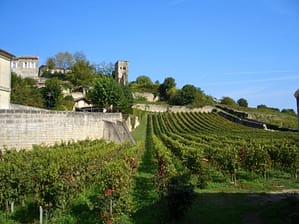If you’ve seen the movie “Sideways” you know that Miles (one of the main characters) has a deep and profanity laced aversion to Merlot. After the movie was released, winemakers swore to what they called “the Sideways effect” – a steep lowering of demand for Merlot and a significant uptick in Pinot Noir sales (which Miles strongly prefers in the movie). This purported effect is so well known, in fact, that the American Association of Wine Economists published a Working Paper in 2008 studying the relative change in Merlot and Pinot Noir demand post-Sideways. Complete with Multivariate Regression Analysis, the paper contends that while Merlot demand did decrease slightly after the movie, the increase in demand for Pinot Noir more than made up the difference, so the wine industry as a whole actually benefitted from the entire controversy.
The bad rap that Miles gives Merlot is the result of the perception that Merlot (by the early 2000’s) had become the wine of choice for suburbanites and soccer moms stopping by Safeway on the way home and picking up a random bottle for dinner. But his irrational distaste for this rich and silky varietal bucks significant historical precedent.

Merlot is one of the six traditional grape varietals (along with Cabernet Sauvignon, Cabernet Franc, Petit Verdot, Malbec, and Carmenere) allowed to be used in blends produced in the Bordeaux region in France. In fact, Merlot is the most planted varietal in that legendary region. Generally speaking, wines produced on the left bank of the Gironde estuary (which divides the region) in the regions of Medoc, Haut-Medoc, Saint Julien, Pessac-Leognan, and others use Cabernet Sauvignon as the main grape, with the others blended in lesser proportion, but Merlot constitutes the highest varietal proportion in the wines produced on the right bank in appellations like Saint-Emilion and Pomerol.
Saint-Emilion is, in my opinion, one of the most beautiful villages and areas of all France. With its monolithic church and winding cobblestone streets, it is surrounded by gently rolling hills covered with vineyards (some of which were planted by the Romans in the second century) and dotted by stately chateaux.
Situated in the Aquitaine region, the Bordeaux area (and especially Saint-Emilion) have always had a strong relationship with England. As the wife of Louis VI, Eleanor was queen of France. However, she got that marriage annulled and married Henry Plantagenet who became Henry II, king of England making Eleanor his queen. Because of this special relationship, England had first right to the excellent wines of Eleanor’s homeland and Bordeaux wines enjoyed duty-free status for export to England (unlike wines from the rest of France). So it’s no wonder that Bordeaux (known in England as Claret) became the most popular wine in the world with the help of the largest wine market of the day.

We picked up a few bottles of a 2001 Saint-Emilion from Chateau Destieux at a little wine shop when we were in Saint-Emilion a few years ago. Over the last couple of weeks, we’ve opened a couple of our bottles with some good friends (to celebrate Lisa’s birthday) and enjoyed the magic of Merlot. Aging for ten years in barrel and bottle means that all the tannins and harsh alcohol burn of a too-young wine have given way to the soft, silky, supple tones of the fruit. And what you get is just spectacular. This wine sings like Brandi Carlile . . . smooth, but with that undercurrent of raw experience. The sound of a life truly lived.
Given that much of the wine purchased in America is consumed within a few hours after it’s bought (and certainly within a year or two of its vintage), I really enjoy opening an older bottle and thinking about what was happening when the grapes were harvested and crushed and what the wine has seen during its aging.

So much has happened in our lives in the ten years since these grapes were picked and crushed and this wine was born. A lot of good things . . . and some not-so-good things. But at the end of the day, all those experiences make us who we are. Just like all the things that make this wine what it is. I only hope I’ve aged as gracefully and the end product is as subtle, smooth, and pleasant.
